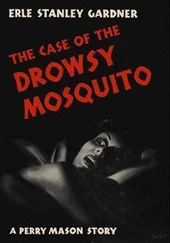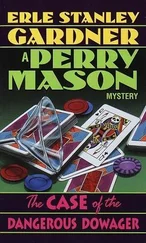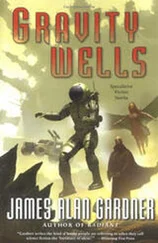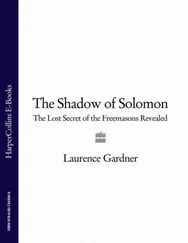Daniel Gardner - The Science of Fear
Здесь есть возможность читать онлайн «Daniel Gardner - The Science of Fear» весь текст электронной книги совершенно бесплатно (целиком полную версию без сокращений). В некоторых случаях можно слушать аудио, скачать через торрент в формате fb2 и присутствует краткое содержание. ISBN: , Издательство: Penguin Group (USA) Incorporated, Жанр: Психология, Политика, Прочая научная литература, на английском языке. Описание произведения, (предисловие) а так же отзывы посетителей доступны на портале библиотеки ЛибКат.
- Название:The Science of Fear
- Автор:
- Издательство:Penguin Group (USA) Incorporated
- Жанр:
- Год:неизвестен
- ISBN:9780525950622
- Рейтинг книги:3 / 5. Голосов: 1
-
Избранное:Добавить в избранное
- Отзывы:
-
Ваша оценка:
- 60
- 1
- 2
- 3
- 4
- 5
The Science of Fear: краткое содержание, описание и аннотация
Предлагаем к чтению аннотацию, описание, краткое содержание или предисловие (зависит от того, что написал сам автор книги «The Science of Fear»). Если вы не нашли необходимую информацию о книге — напишите в комментариях, мы постараемся отыскать её.
The Science of Fear — читать онлайн бесплатно полную книгу (весь текст) целиком
Ниже представлен текст книги, разбитый по страницам. Система сохранения места последней прочитанной страницы, позволяет с удобством читать онлайн бесплатно книгу «The Science of Fear», без необходимости каждый раз заново искать на чём Вы остановились. Поставьте закладку, и сможете в любой момент перейти на страницу, на которой закончили чтение.
Интервал:
Закладка:
Still, however important these factors may be, they lie at the surface. It is underneath, moving like tectonic plates, that we find the real force driving the media’s hyperbolic coverage of terrorism.
People were afraid. Their intuitive minds told them to be afraid, the Bush administration told them to be afraid, and being afraid, they wanted to know more. Reporters, editors, and producers shared these feelings. After all, they lived in the same communities as everyone else, listened to the same presidential statements, and processed it all with the same intuitive minds. And so, in living rooms and newsrooms alike, there was virtual unanimity that terrorism was a grave and growing menace.
With that belief in place, confirmation bias kicked in. Information that contradicted what everyone believed—attack statistics, mortality odds, risk comparisons, the failures of Aum Shinrikyo, the spectacular plots that turned out to be much less than they appeared—got little or no attention. But reporters seized on absolutely anything that confirmed what everyone believed and fed it into the media machine—which then poured out vast volumes of biased information.
Inevitably, this strengthened the popular perception of terrorism. A mammoth feedback loop was created. To the media, actual attacks and foiled plots—of any scale or sophistication—proved that terrorism was a grave and growing menace. So did the absence of attacks and plots. Even imaginary attacks would do. What was never considered was the possibility that terrorism is not a grave or growing threat. It was a grand and disturbing demonstration of the profound influence that confirmation bias can have on human affairs.
With the news media, politicians, and the public locked in a feedback loop that steadily amplified the fear, the entertainment media added their contribution. It is hard to imagine a threat better suited to drama than terrorism, and for that reason it has been used in novels, movies, and TV shows for decades. Post-9/11, with fears of terrorism soaring, the image of outnumbered government agents struggling mightily to stop scowling plotters from nuking Los Angeles—most notably on the popular television show 24 —became a dramatic staple.
The most disturbing aspect of much of this entertainment was the deliberate blurring of the line between fiction and reality. “Five years ago, September 11 was seared into America’s memory,” begins a fairly typical commercial for the Showtime series Sleeper Cell: American Terror . The speaker is the real President Bush delivering a speech marking the anniversary of 9/11. “Today we are safer,” he says, “but we are not yet safe.” Ominous drums pound. Images of flags and cities appear and go black. Then comes a furious burst of images and sounds—a man firing a gun, someone being tortured, another urgently whispering, “A nuclear attack. . . .” And finally a warning flashes on-screen: “The next attack could be anywhere.”
Everything we know about risk perception suggests this stuff is poisonous to both Head and Gut. For Head, there is factual misinformation. The Centers for Disease Control actually felt compelled to issue a fact sheet explaining that smallpox isn’t nearly as communicable, uncontrollable, or deadly as it was portrayed in made-for-TV movies. For Gut, there is a barrage of violent images and potent emotions that can drive its intuitive judgments. As we saw earlier, people’s perceptions of the risks posed by climate change were significantly boosted by watching The Day After Tomorrow . If an implausible movie about a relatively abstract threat can do that, it’s reasonable to assume that gritty, pulse-quickening stories about a far more visceral and emotional threat can do much more.
What’s the average American to make of all this? She starts with the strong feeling that terrorism is a serious threat because that’s what the memories and feelings of 9/11 lead her Gut to conclude. This sense is repeatedly confirmed by the statements of the administration and the rest of the political establishment. It’s also strengthened every day by government agencies, police departments, security experts, security companies, NGOs, the media, pundits, and the entertainment industry. And this average American is surrounded by others who have the same memories and feelings, who get the same information from the government and the media, and who agree that the threat of terrorism is high. In the face of such a consensus, it’s only natural to go with the group, particularly because, as we have seen, our tendency to conform to the group’s opinion rises as the issue becomes more important—and this is about as important as issues come.
Strongly believing the threat of terrorism to be high, the average American then becomes subject to confirmation bias, latching on to whatever information she comes across that seems to support her belief while ignoring or dismissing whatever does not. In effect, she filters information through a screen of bias—information that has already been filtered the same way by the media and others. The result is bias squared.
It’s perfectly understandable, then, that Americans’ fear of terrorism actually rose during four years in which there were no terrorist attacks, or that almost one-half of Americans are worried that they or their families could be killed by terrorists. It’s hard to imagine a more powerful array of factors pressing on the unconscious mind. And the influence of Gut on our conscious judgments should never be underestimated, not even when those making the judgment have spent their lives rationally analyzing information. In July 2007, Homeland Security director Michael Chertoff told the Chicago Tribune that he had a “gut feeling that we are in a period of vulnerability. ” George Tenet, the former director of the CIA, used almost exactly the same phrase in his 2007 memoirs. “I do not know why attacks didn’t occur” in the years after 9/11, he wrote. “But I do know one thing in my gut: al-Qai’ida is here and waiting.”
And that’s just what terrorists want the gut of George Tenet and every other American to think. “America is full of fear from its north to its south, from its west to its east,” Osama bin Laden said in a 2004 video. “Thank God for that.”
“Terrorism,” writes Brian Michael Jenkins, “is actual or threatened violence calculated to create an atmosphere of fear and alarm, which will in turn cause people to exaggerate the strength of the terrorists and the threat they pose.” Terrorists are not formidable foes. If they were, they would fight using other means. It is precisely their weakness that leads them to carry out the slaughter of innocents—the one form of attack available to even the feeblest combatant. In itself, such slaughter is unlikely to deliver a serious blow to the enemy. But it does generate fear, and fear can inspire reactions that terrorists hope will advance their cause.
Louise Richardson notes that terrorists always have two sets of goals, one political, the other tactical and immediate. They almost never achieve their political goals. But they often manage to advance their tactical goals and “it is this success that appeals to disaffected youths seeking a means of rapid redress.” These tactical goals can be summed up in three words: revenge, renown, and reaction.
“Revenge” is the only one of the three goals that the terrorists can deliver for themselves. The enemy wronged them—as they see it—so they kill the enemy’s people as retribution.
“Renown” refers to the terrorists’ image among potential sympathizers. They want to be seen as a major force—an army of honorable soldiers— with a realistic chance of hurting and defeating the enemy. They can do this in part by executing bold attacks—the “propaganda of the deed,” as terrorism was called by nineteenth-century anarchists. But that only goes so far. How damaging are the attacks? How powerful are the terrorists? Is the enemy seriously threatened? The terrorists don’t get to answer these questions. Enemy governments and media do, and so renown depends mainly on how they describe the threat.
Читать дальшеИнтервал:
Закладка:
Похожие книги на «The Science of Fear»
Представляем Вашему вниманию похожие книги на «The Science of Fear» списком для выбора. Мы отобрали схожую по названию и смыслу литературу в надежде предоставить читателям больше вариантов отыскать новые, интересные, ещё непрочитанные произведения.
Обсуждение, отзывы о книге «The Science of Fear» и просто собственные мнения читателей. Оставьте ваши комментарии, напишите, что Вы думаете о произведении, его смысле или главных героях. Укажите что конкретно понравилось, а что нет, и почему Вы так считаете.












